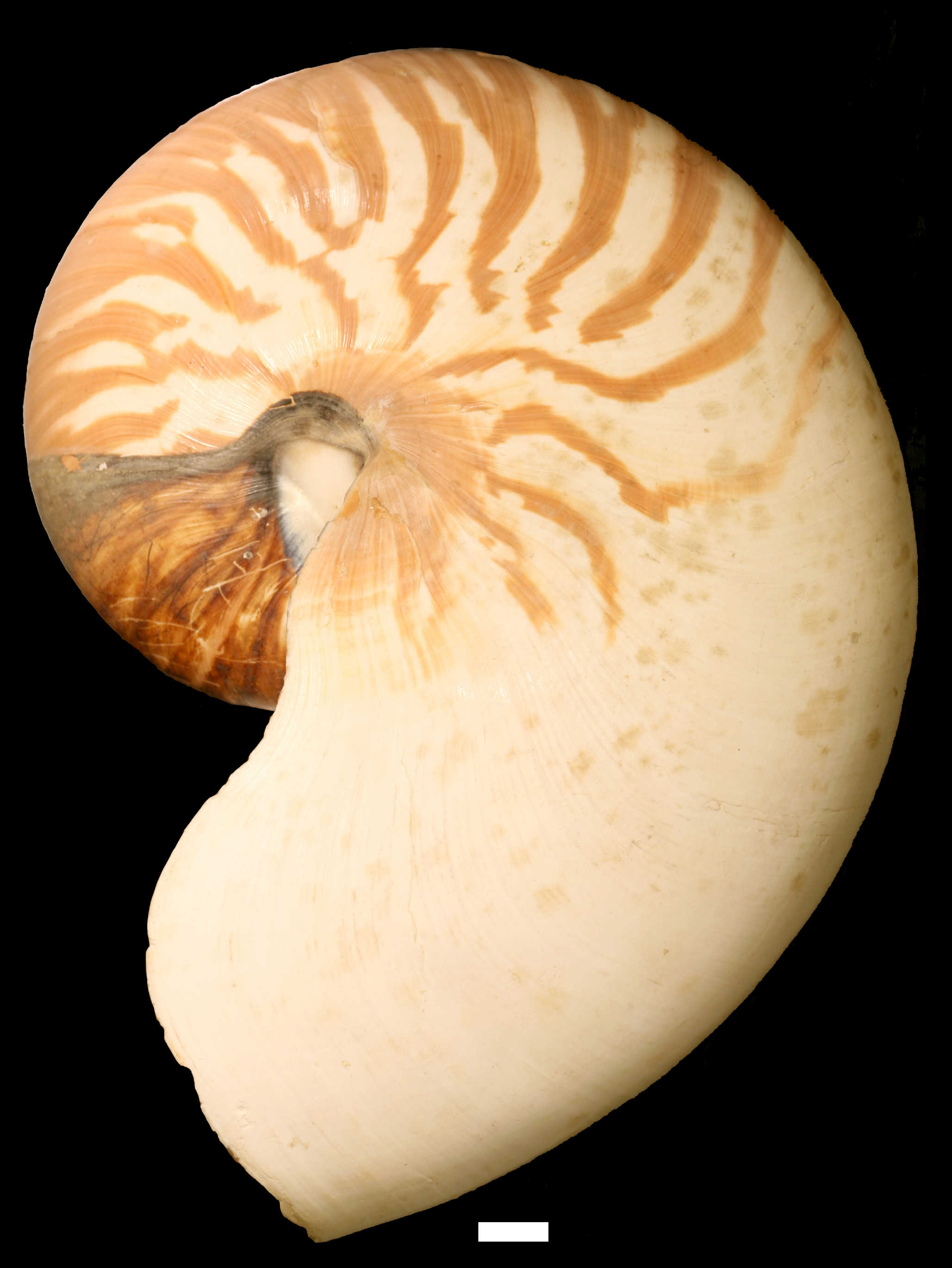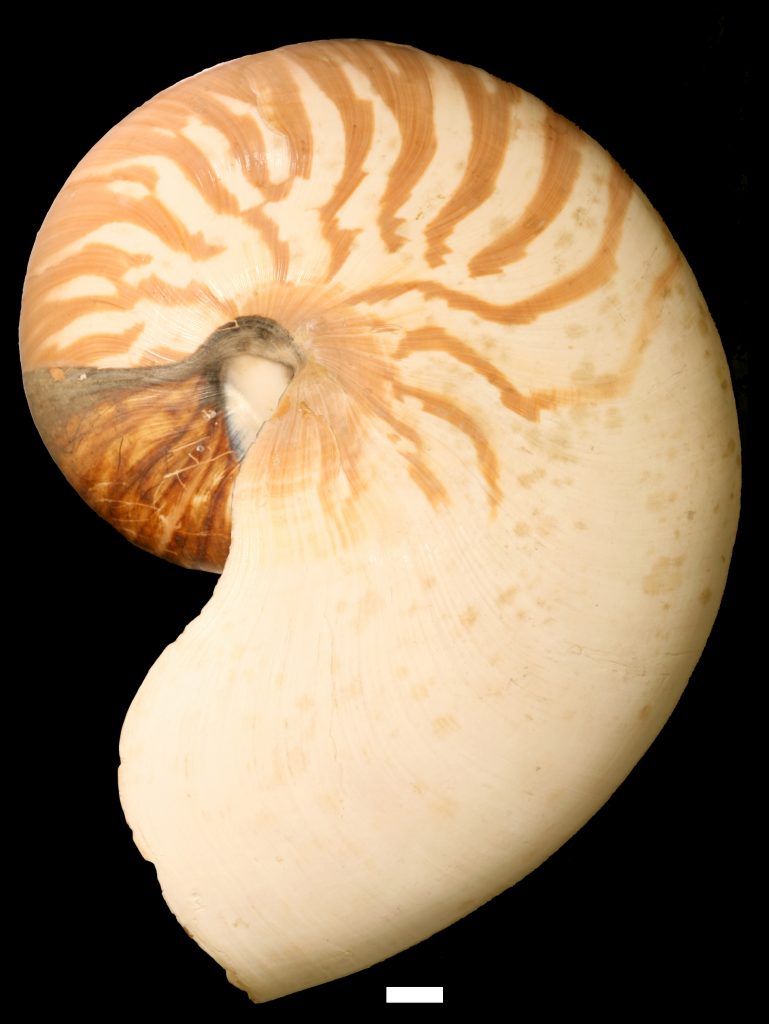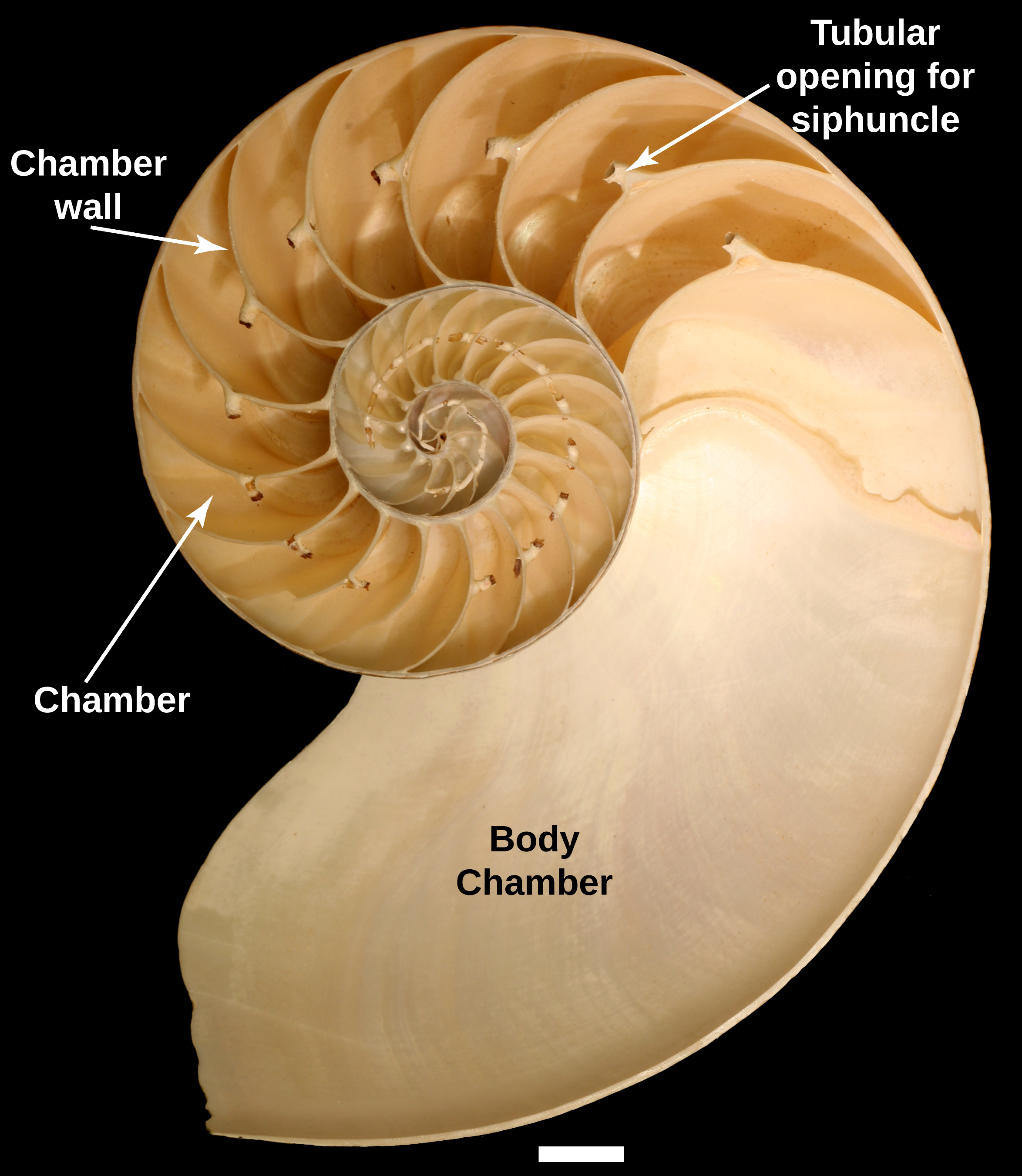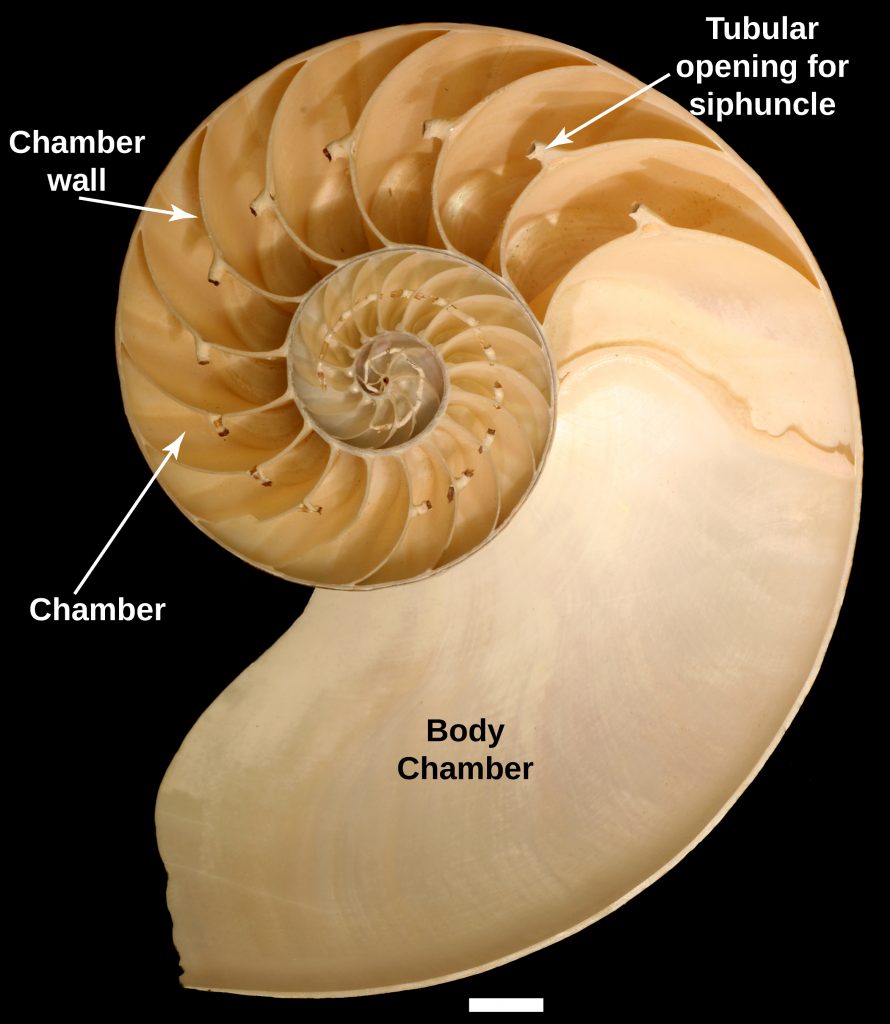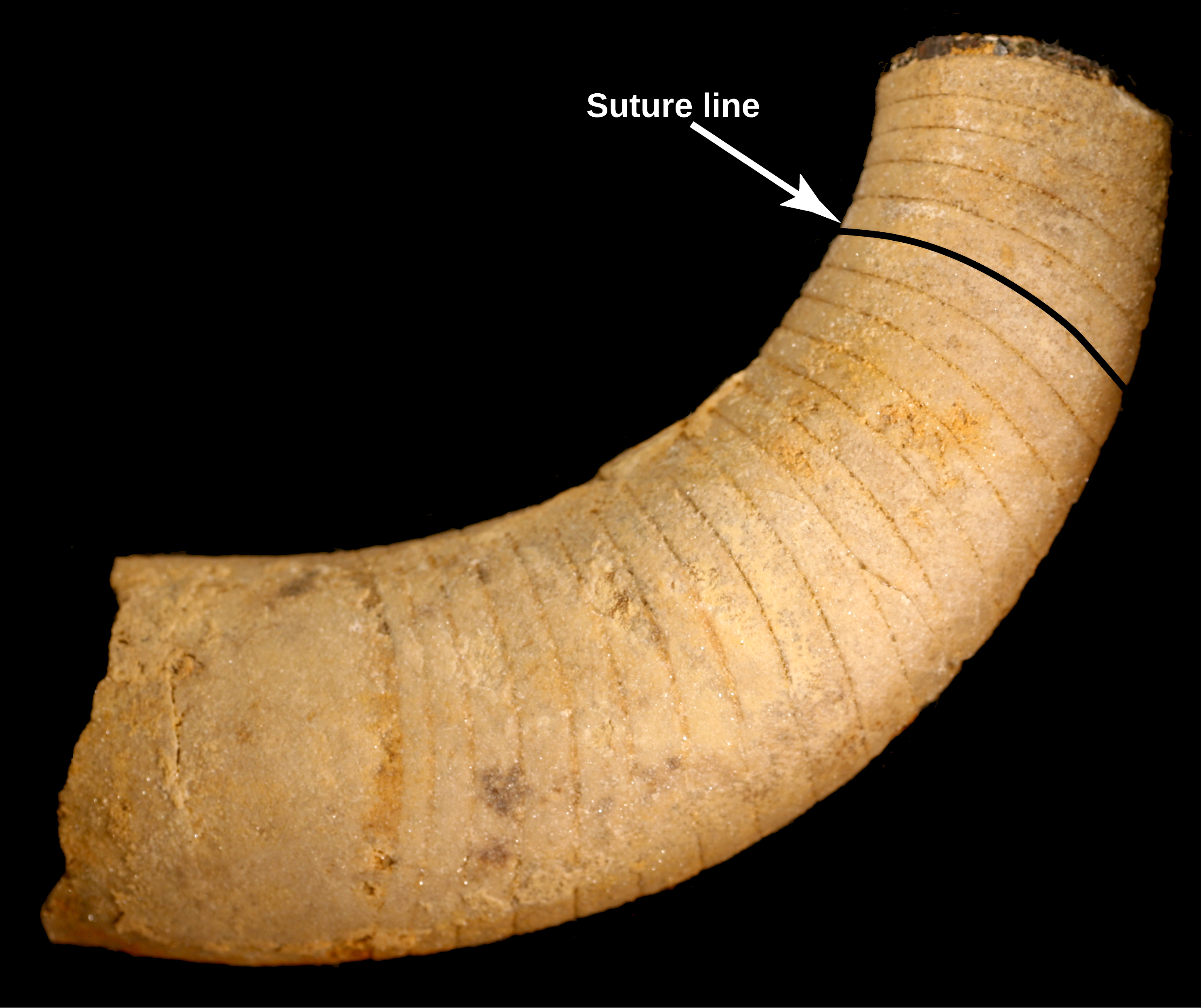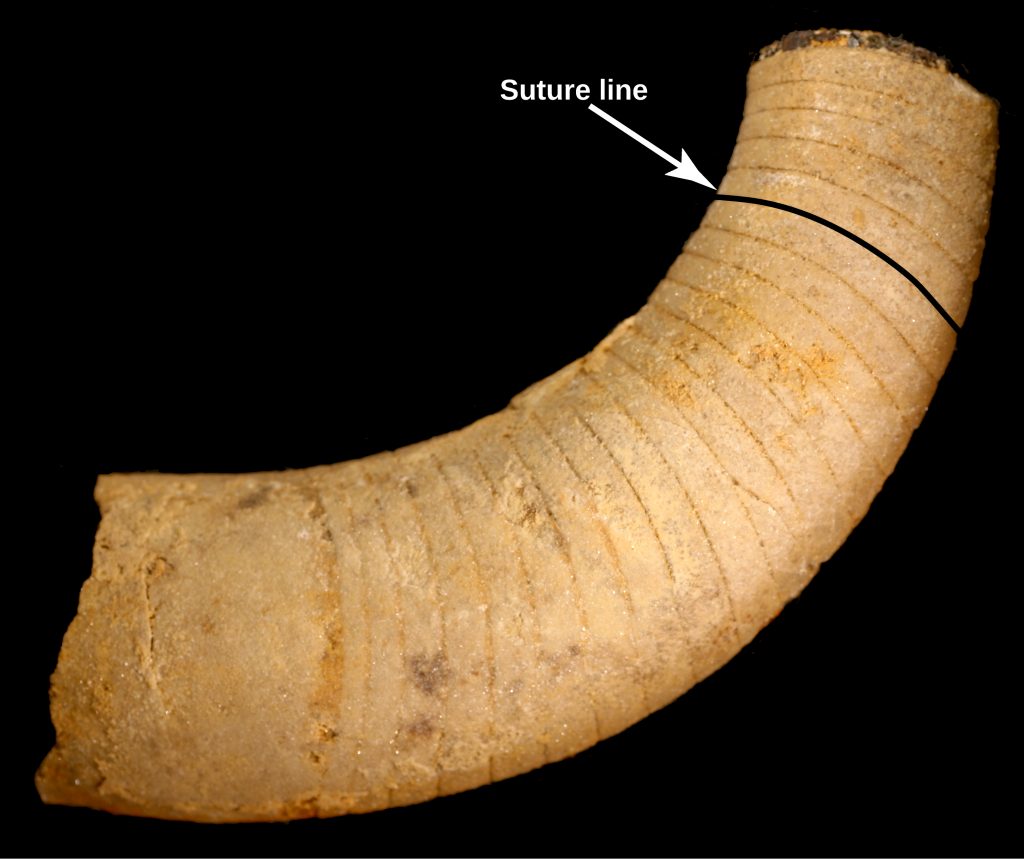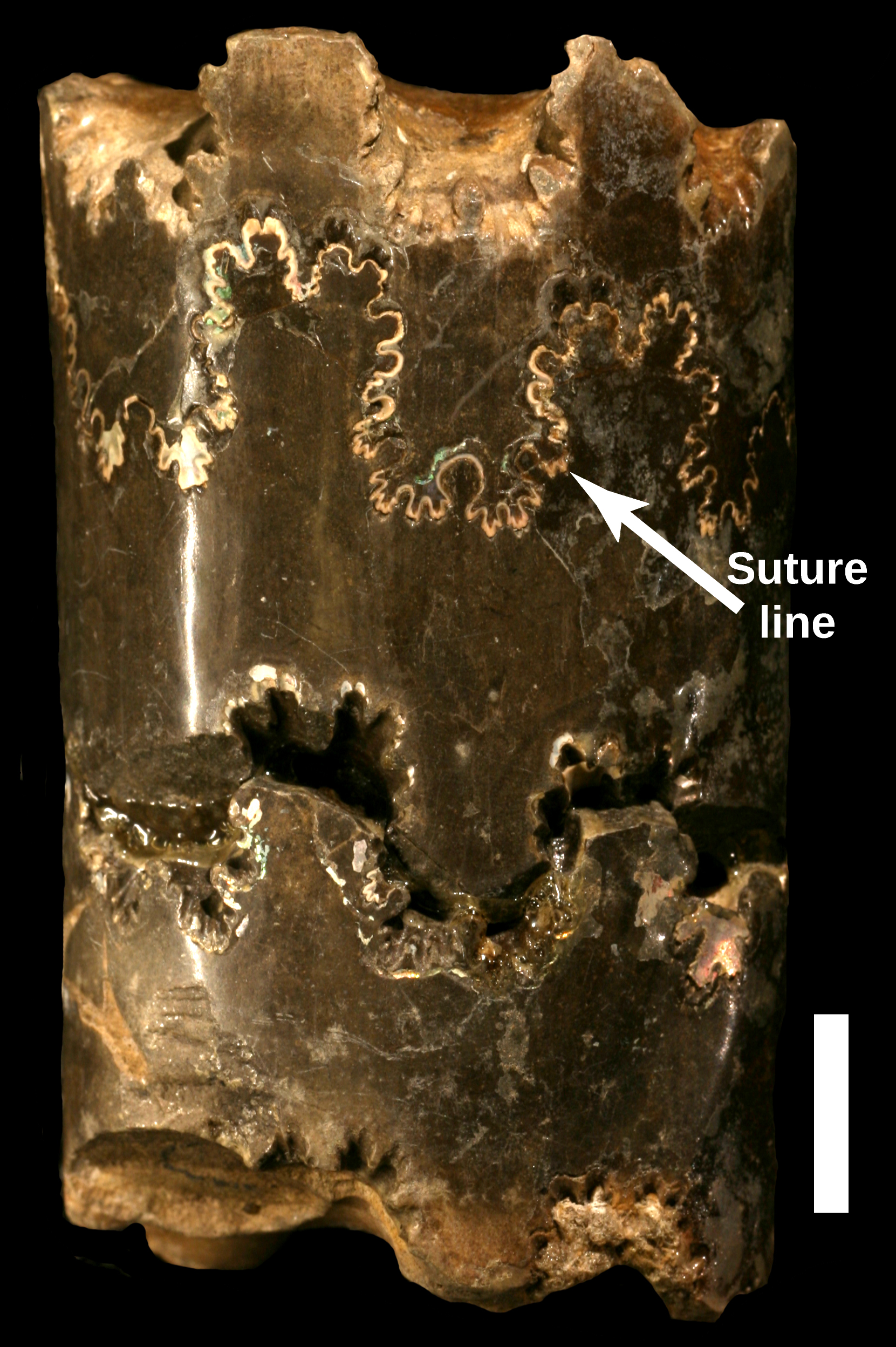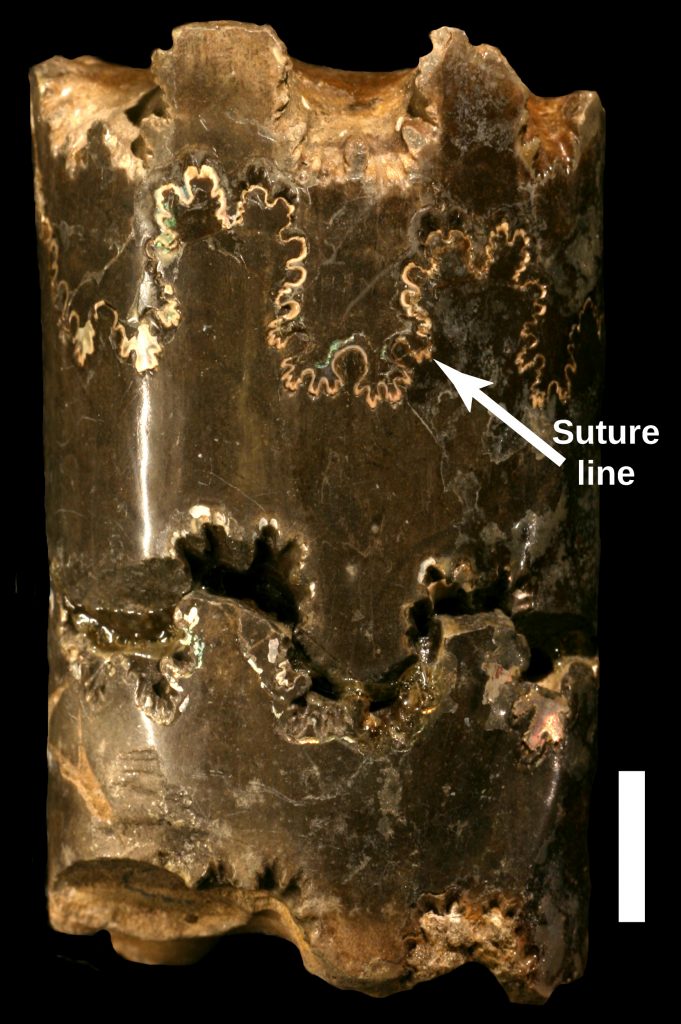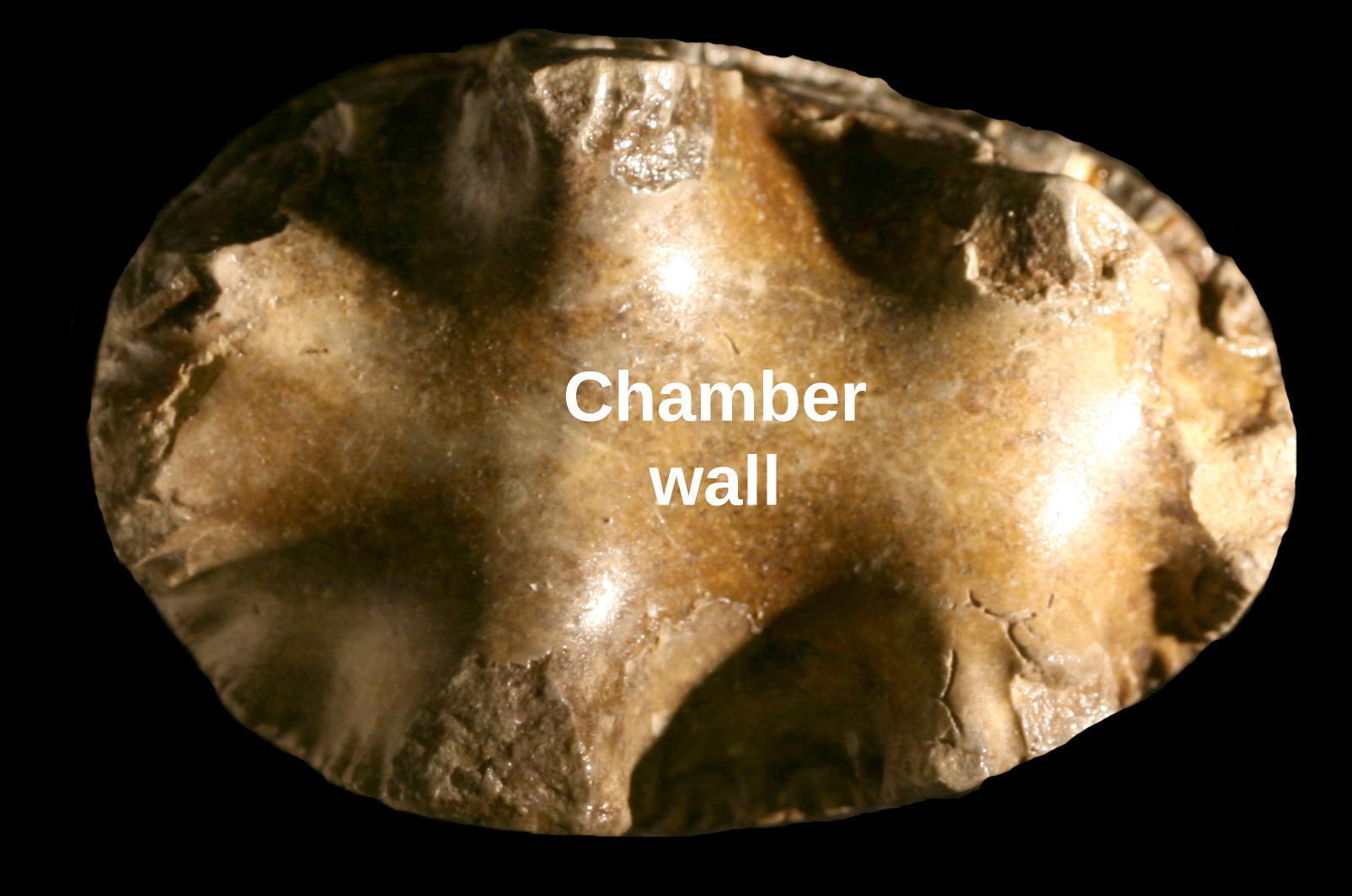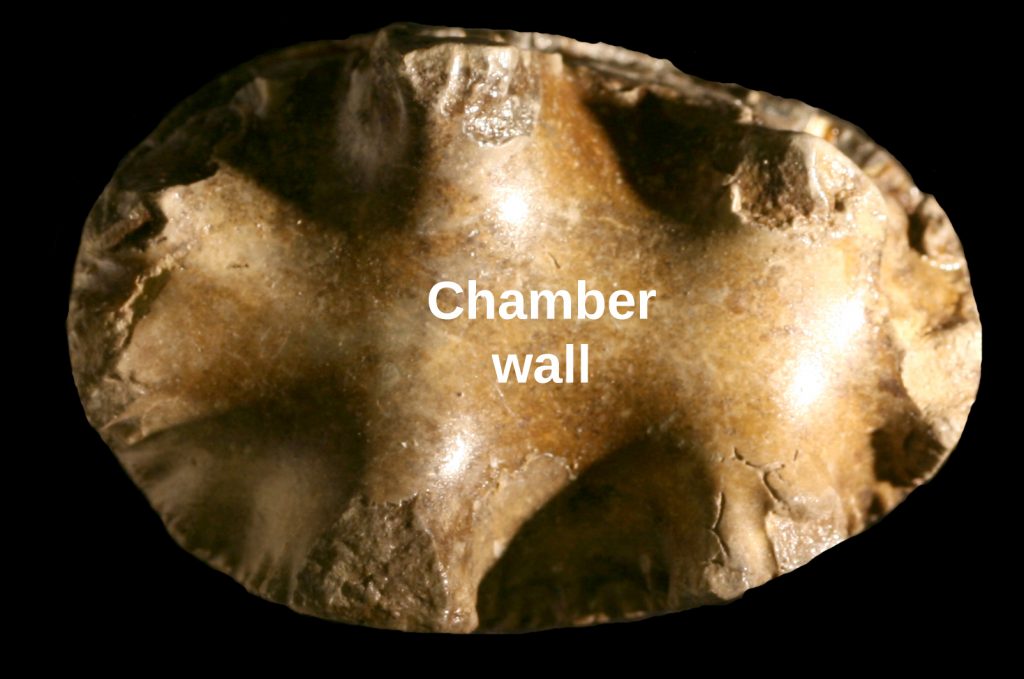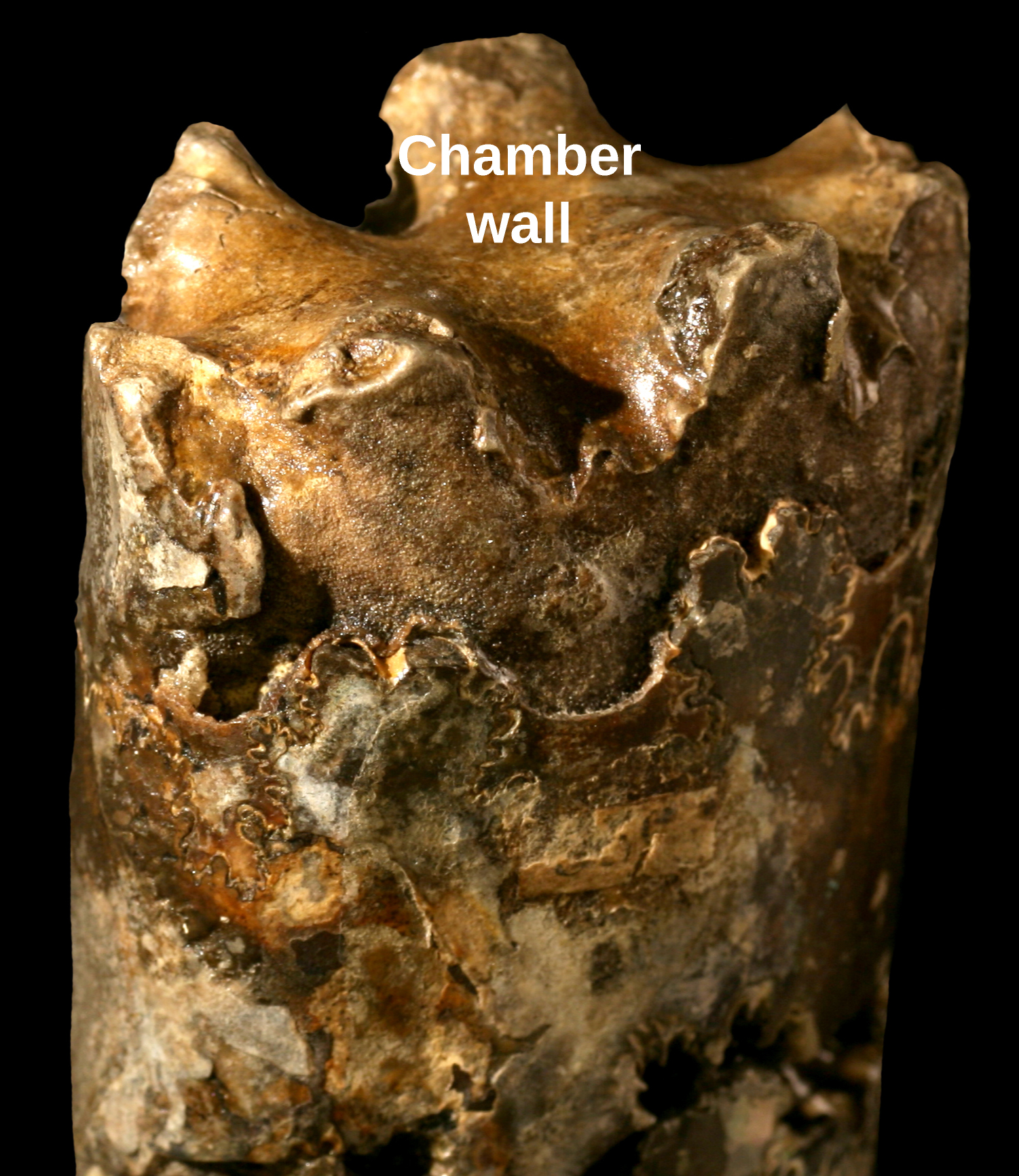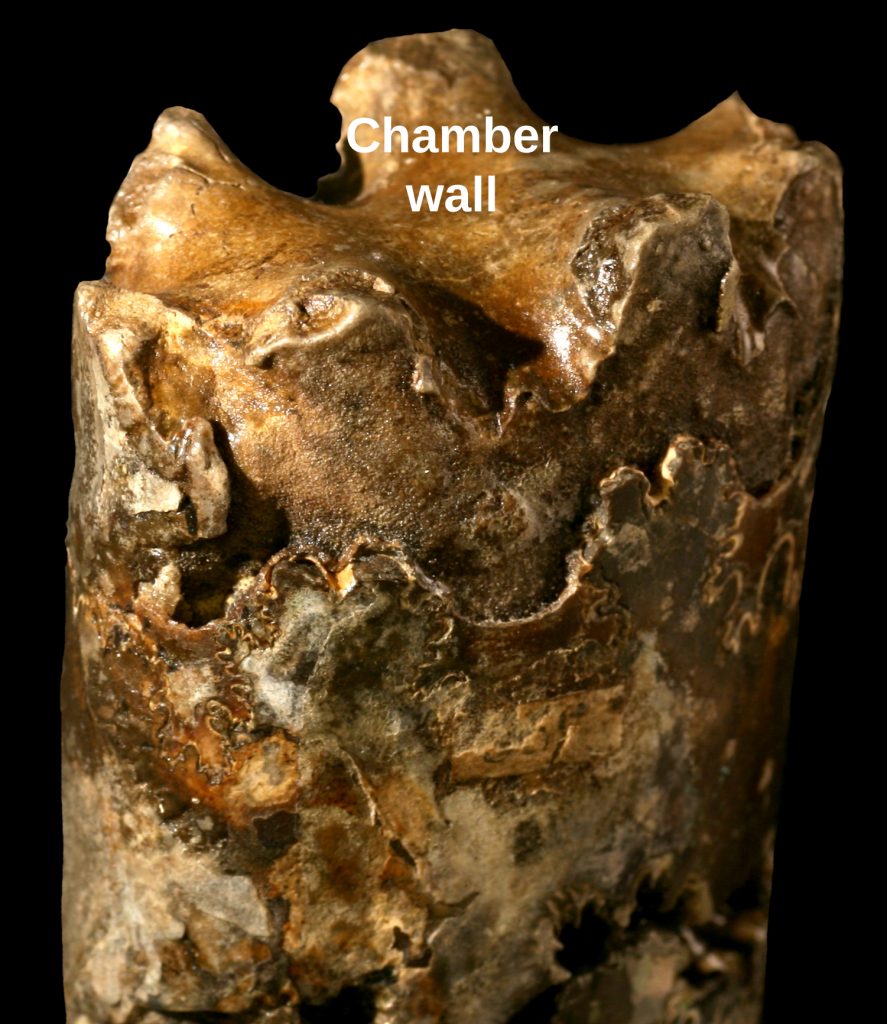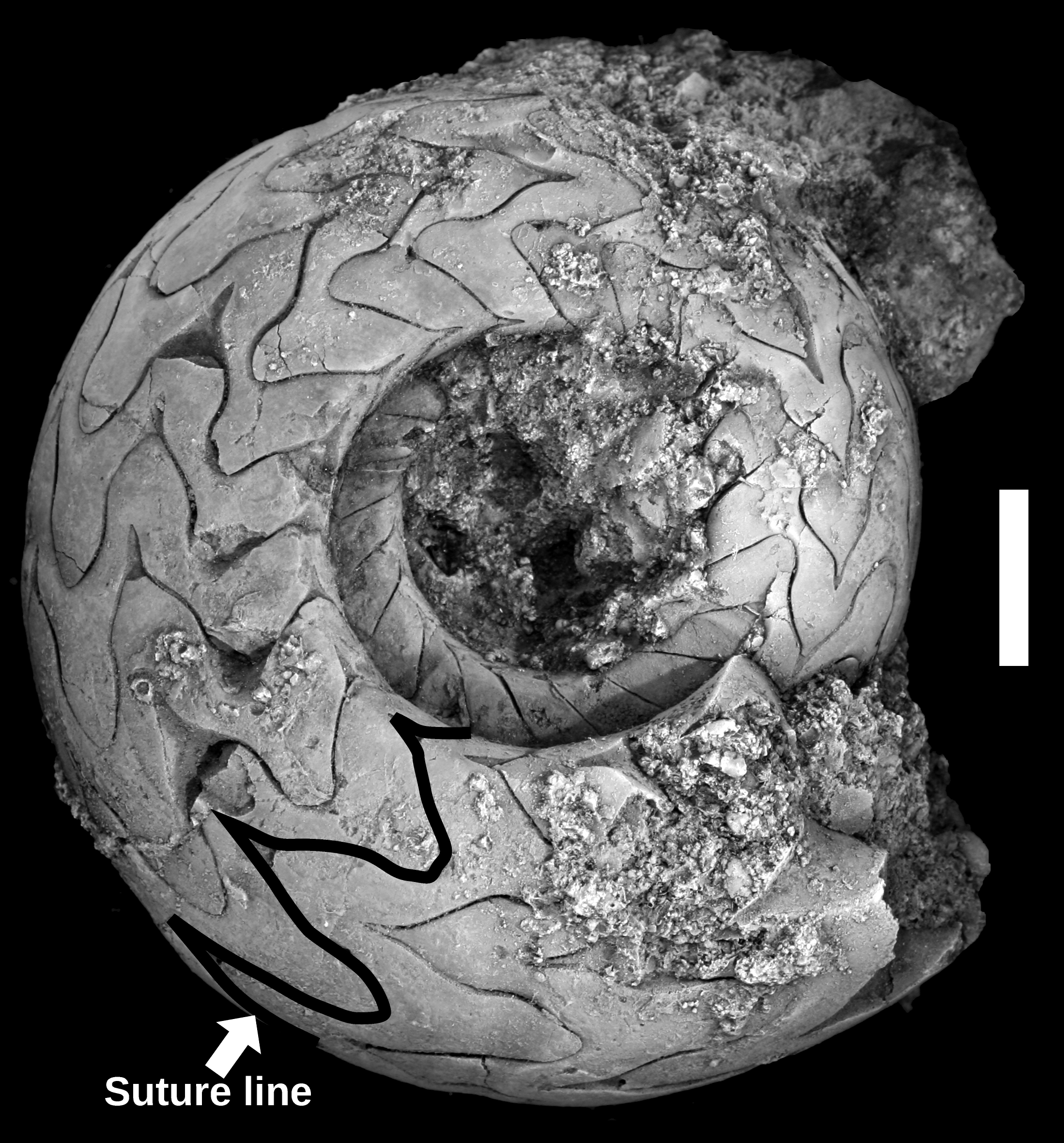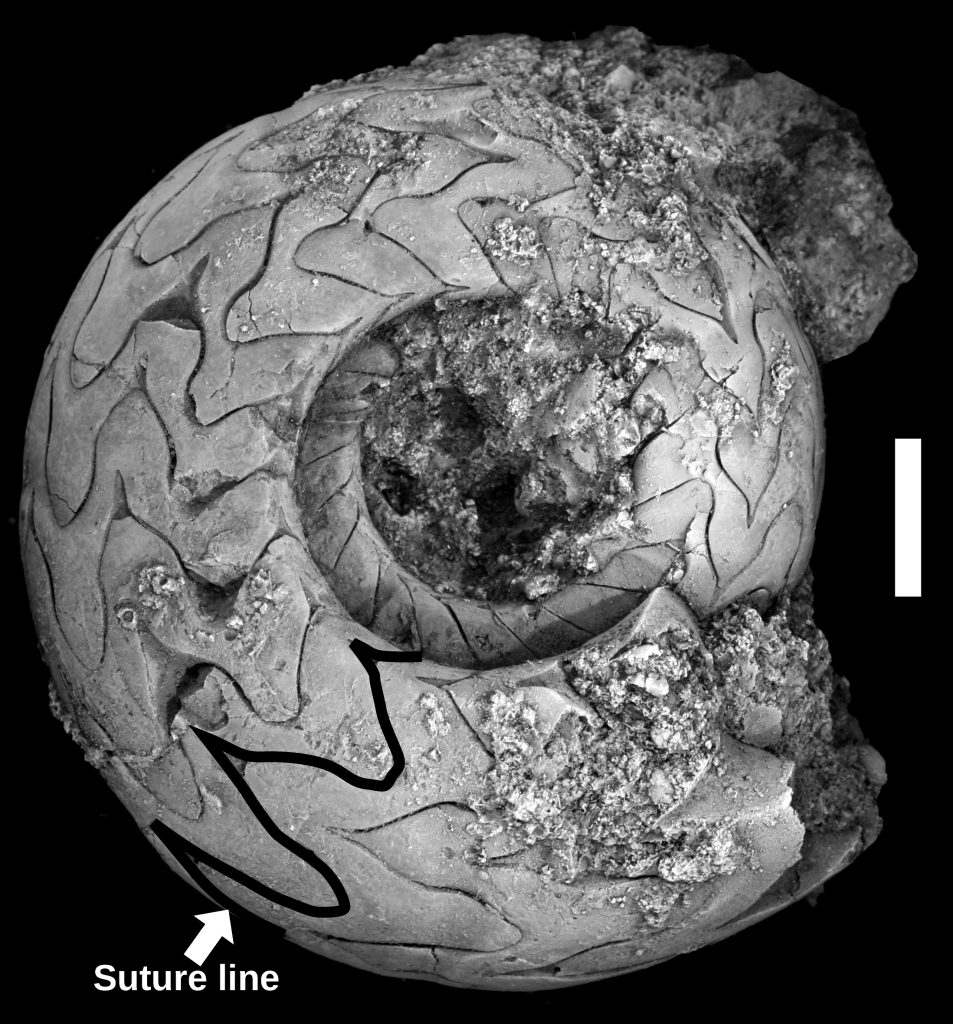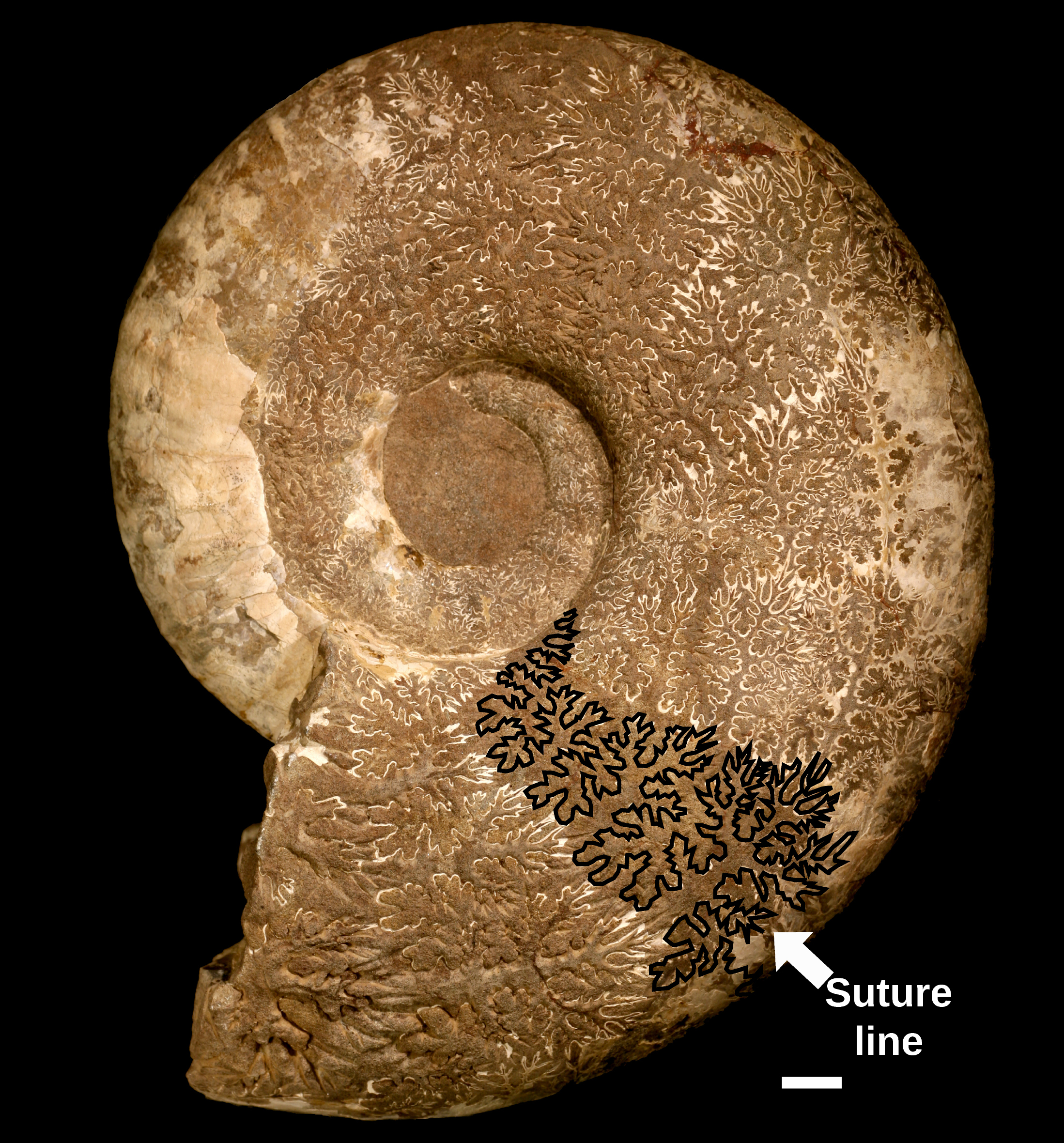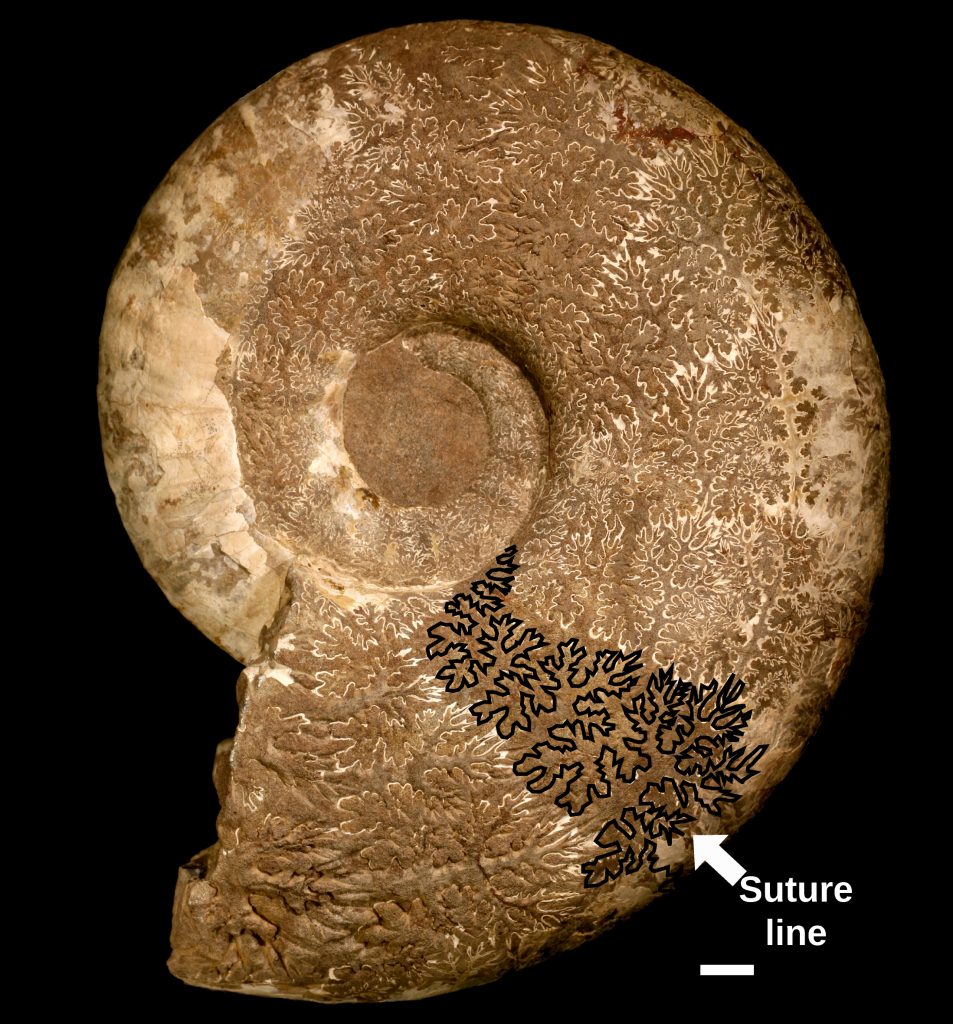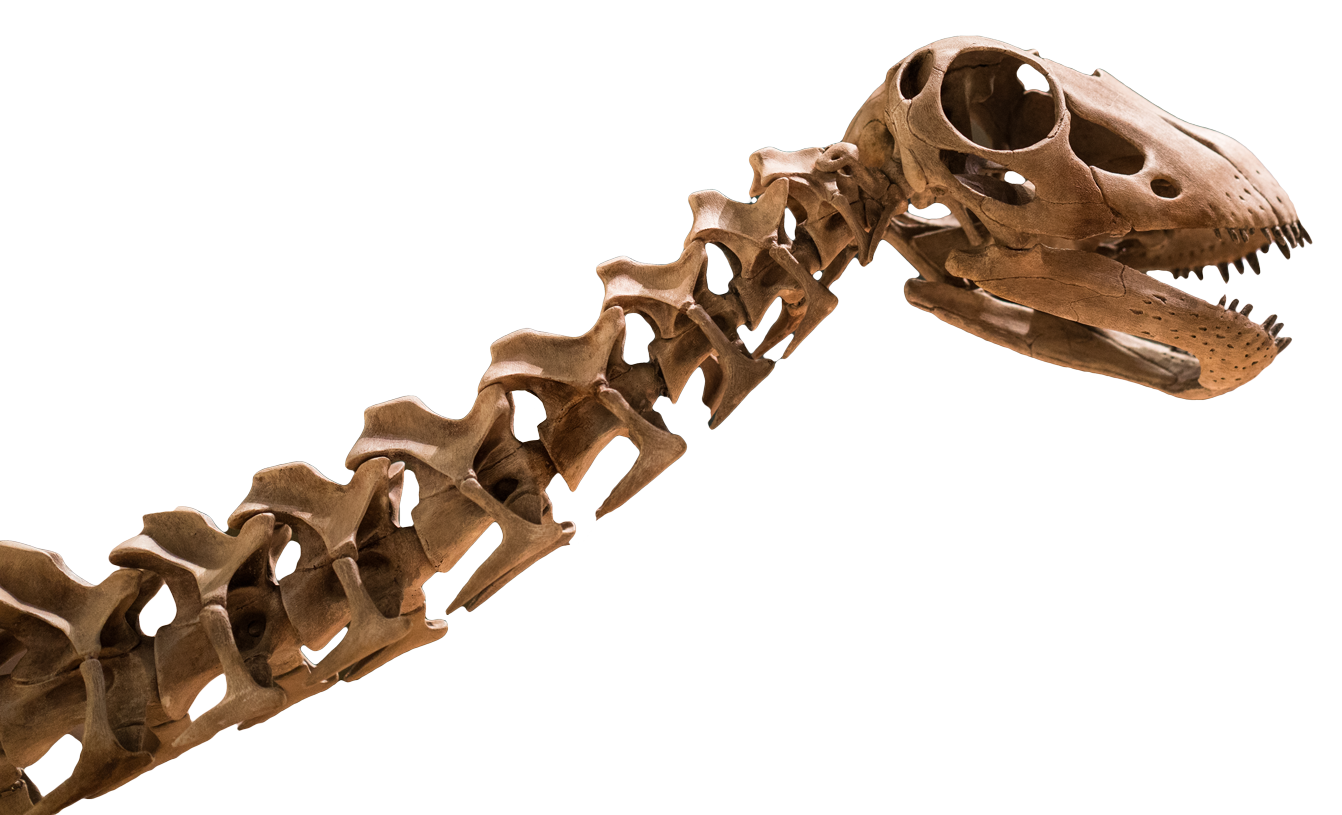Cephalopods are swimming molluscs that live in the oceans. Squids and octopuses are the best known of today’s cephalopods. They are rarely found as fossils because they do not have a hard shell. Nautilus is a living nautiloid cephalopod with a coiled shell. Nautiloids and their extinct relatives, including ammonites and goniatites, are commonly found as fossils.
The interior of a cephalopod shell is walled off into chambers. The animal lives in a large chamber (body chamber) at the front, and the rest of the chambers contain gas and fluid. A tube of living tissue (the siphuncle) passes backwards through chambers through tubular openings in the walls. It controls the animal’s buoyancy. As the animal grows, it uses the siphuncle to change the amount of gas and fluid in each chamber. This prevents the animal from sinking to the sea floor when it is resting.
The chamber walls cannot be seen on the outside of the shell. If the outer shell wall has broken away, the edge of the chamber walls form suture lines. The suture line of nautiloids is straight, but it is folded in other kinds of shelled cephalopods. Modern nautiloid cephalopod shells are coiled, but extinct forms may also be straight or curved.
The chamber walls of goniatites and ammonites are curved like corrugated cardboard where they join the underside of the outer shell wall, probably to strengthen the shell. This folding produces more complex, folded suture lines.
In the images below, one suture line is outlined in black. Goniatites and ammonites can be identified from the shapes of their suture lines. Ammonites have more complexly folded sutures.
What did they eat?
Cephalopods are carnivores. The modern Nautilus feeds on crustaceans and small fishes. It has many small tentacles which are used to capture prey.
Where did they live?
Nautilus lives in relatively deep ocean waters near coral reefs (down to 1000 feet or more). Geological evidence shows that many of their extinct relatives lived in shallower water. All shelled cephalopods (living or extinct) swam using a form of jet propulsion by squirting water out of their shells.
When did they live?
The oldest shelled cephalopods appeared towards the end of the Cambrian Period (about 500 million years ago) and some are still alive today. Ammonites lived in the Jurassic and Cretaceous periods (about 200 million to 65 million years ago) and disappeared at a major extinction event. Goniatites are even older, and can be found in rocks that formed during the middle Devonian through Permian periods. They became extinct at the end of the Permian.
Can I find them in Oklahoma?
Ammonites can be found in Cretaceous rocks of southern Oklahoma. Goniatites are common in Carboniferous rocks. Nautiloids are relatively rare, and are most likely to be found in Ordovician, Silurian, Devonian and Carboniferous rocks.

